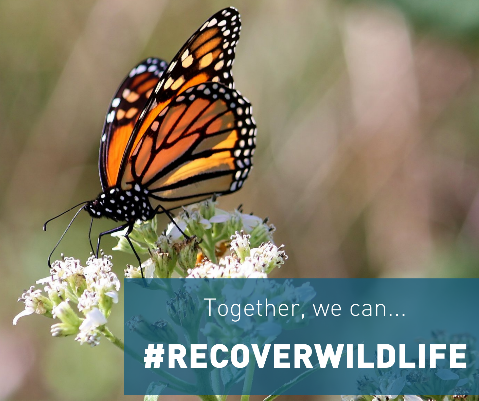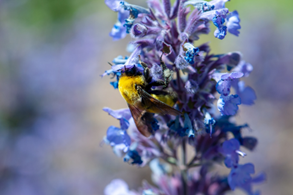Director’s Bulletin | March/April 2021

Spring 2021
Hello Everyone:
We have completed the 2021 legislative session and have tentatively set recreational and commercial salmon seasons.
WDFW’s funding is healthy for the next biennium — there are no cuts or furloughs, and we have received many new funded assignments. The Legislature passed several pieces of priority legislation for the Department, including important wins for fish and wildlife habitat. Now, the challenge turns to implementation. Department staff will be working hard to proceed with recruiting and contracting to ensure that we are able to ‘hit the ground running’ on July 1 to successfully deliver on these new assignments. For more details on WDFW’s 2021–23 operating and capital budgets, visit our budget information webpage.
Now that some of the big policy forums are wrapping up, I am hoping to invest some quality time on rivers, the ocean, and trails over the coming weekends. I hope you all do the same. The days are getting longer, lowland lake fishing is at a high point, and now is a great time to take part in life outdoors with friends and family.
Sincerely,
Kelly Susewind
WDFW Director

Let’s #RecoverWildlife! — Recovering America’s Wildlife Act reintroduced
Outdoor recreation supporters, hunter and angler groups, tribes, businesses, conservation groups, and nature enthusiasts across the country noted that the bi-partisan Recovering America’s Wildlife Act was reintroduced by Representatives Debbie Dingell (D-MI), Jeff Fortenberry (R-NE) and additional co-sponsors on Earth Day. This legislation is perhaps the single most significant legislation for nature in decades. The act would supply much needed support to conserve wildlife and to implement our State Wildlife Action Plan. Some $21.8 million annually would come to Washington state to be leveraged by another $7.2 million in non-federal support. If enacted, the legislation would bring significant, ongoing, and dedicated funding to support biodiversity in Washington and throughout the United States. The act aims to address the needs of more than 12,000 game and non-game species, including 268 species and 30 habitats in Washington. We want to thank all the Washington State congressional co-sponsors, organizations, and people in Washington who have supported this act in the past. I am hopeful that our bi-partisan group of supporters across the nation and in Congress will see this legislation through this session.

Trout season in high gear
The statewide trout fishing season launched again on April 24, when hundreds of lakes throughout Washington opened for fishing. Many lakes in Washington are open for trout year-round, but opening day is a major event that brings people out to fish from all over the state.
Opening day also marked the beginning of the annual statewide trout derby, where anglers can win prizes by catching tagged trout in lakes across Washington. There are more than 1,000 prizes available in 2021, with a total value of more than $38,000. The derby runs through Oct. 31.

Live event in May: Hand-raised trout to home-cooked meal
WDFW is hosting an online, interactive event at 10 a.m. on Saturday, May 8. The event will introduce new or returning anglers to the basics on how to catch and cook lake trout. Participants will also get an inside look at what goes into raising hatchery trout for anglers to catch and eat. Pre-registration is not required. To tune in, participants should visit: zoom.us/j/95960846428 a little before 10 a.m. on Saturday, May 8. Closed captioning will be available throughout the event and a recording will be available on YouTube a few days afterwards.
WDFW plans prescribed burns to improve habitat, reduce wildfire risk
Annual prescribed burns on WDFW-managed lands in Eastern Washington are ongoing as conditions allow. Controlled fire reduces the risk of wildfire and improves habitat for animals such as deer and elk. Prescribed fire is a forest management practice that burns off accumulations of vegetation and logging debris to create a healthier forest. This reduces the risk of high-intensity wildfires that destroy wildlife habitat and devastate communities, like the wildfires that swept through Eastern Washington in September 2020. For more on locations, please refer to our recent news release.
Washington salmon seasons tentatively set
Despite a strong projected coho salmon return to the state’s ocean waters, this year’s Washington salmon seasons largely reflect continued low runs of some wild Chinook and coho stocks, especially in Puget Sound. The state’s 2021–22 salmon fishing seasons, developed by WDFW and treaty tribal co-managers, were tentatively set April 15 at the end of a week-long Pacific Fishery Management Council meeting held via webinar. For details on salmon seasons for Puget Sound, the Columbia River, and ocean waters, please read our recent news release.

Conservation wins: WDFW works with partners to restore valuable and beautiful native abalone
WDFW is working with federal and state partners to protect and conserve a species of large sea snail with a shell, a taste, and lifestyle that led to its wide-scale destruction. The pinto abalone — the only abalone species native to Washington — has experienced a drastic reduction in population in recent decades. From 1992–2017, the population fell by an estimated 97%, putting the species at risk of local extinction. Historically prized as food and for its contrasting red and green shell with an iridescent interior, pinto abalone is a species that has been too popular for its own good. Now, thanks to funding commitments from the legislature and work with partners like the Puget Sound Restoration Fund, we are out-planting 10,000 captive bred, hatchery-raised juvenile abalone that will be spread across 10 sites within the San Juan Islands. Sites are 25–30 feet deep, and all work is done by scientific divers using scuba gear.

Annual Washington wolf population report shows growth for 12th year
Washington wolf recovery continues to make solid progress. Washington’s wolf population continued to grow in 2020, as the minimum count of wolves reached its highest levels since the species began returning to Washington in recent years. WDFW uses activities like track, aerial, and camera surveys to conduct the annual population estimate and look for new wolf packs. Of the known wolf packs in Washington, 79% were not involved in any known livestock depredation in 2020, while seven packs were involved in depredations. WDFW staff, partnering producers, non-government organizations, and county officials worked hard last grazing season at reducing wolf-livestock conflict. This coming grazing season, we will pilot some newly innovated non-lethal tools and work with producers, range riders, and landowners on action plans for deploying them.
Dungeness crab fishing resumes
After a long wait for naturally occurring marine toxins to recede, recreational and commercial Dungeness crab fisheries on the Washington coast — including the popular waters of Willapa Bay and Grays Harbor have opened. While domoic acid levels could well rise again, the reprieve has been a welcome relief for everyone who have waited with anticipation to see these areas open and providing enjoyment and supporting livelihoods in coastal communities.

Conservation wins: Taylor’s Checkerspot butterfly
There are just over 150 species of butterflies in Washington, with Island Marble, Taylor’s Checkerspot, Monarch, and Mardon Skipper included as “species of greatest conservation need”. Recently, we worked with volunteers to release thousands of Taylor’s checkerspot caterpillars (larvae) on prairies in Thurston County to restore this species. The butterfly larvae were raised at Mission Creek Corrections Center for Women in Belfair, WA as part of the Sustainability in Prisons Project. The larvae are the offspring of butterflies we collected from the only wild population remaining in the Puget Lowlands on Joint Base Lewis McChord. This work is done in partnership with the U.S. Fish and Wildlife Service, Oregon Zoo, Sustainability in Prisons Project, the Department of Defense and the Center for Natural Lands Management, and South Sound Prairies.

Campaigns support various kinds of outdoor adventures
The great outdoors fits into everyone’s life in unique and personal ways. Watch for a ‘Life Outdoors’ digital marketing and video campaign to foster connections and appreciation for nature, the wide variety of Washington landscapes, and all forms of outdoor recreation. The campaign will inspire Washingtonians to share their own way of investing in time outdoors and will promote understanding of the benefits of outdoor lifestyles. We are aiming to reach new audiences alongside our long-term stakeholders. At the same time, if you are new to spring turkey hunting, check out WDFW’s Turkey Takeover blog series. We put a focus on wild turkeys in Washington to help new hunters prepare for the spring general season that runs through May 31.

Don’t Let it Loose” Art Contest runs through May 14
WDFW is partnering with the Washington Invasive Species Council to sponsor an art contest as part of the “Don’t Let it Loose” campaign which explains the dangers of releasing unwanted pets and plants into the wild and highlights other ways to rehome them. Artists can submit a wide range of entries, including drawing, photography, dance, music, and more. Winners will receive an award, ranging from stickers to gift cards, and have their entries displayed on the Washington Invasive Species Council and WDFW websites. For full contest rules and inspiration, visit the council’s website.

Southern Resident killer whale boater education campaign
We are working with a variety of partners on a significant public education effort letting recreational boaters know about the regulations in place to help protect Southern Resident killer whales. One key element is a video (plus short promo clips) which will be supported by a substantial social media campaign, digital ads on boating websites, signs for water access areas, displays at boat re-fueling stations, and more. We will cast a wider net with Seattle Times print and digital ads, and we are exploring possible YouTube and/or radio opportunities. Finally, we are equipping WDFW enforcement officers with printed materials to share with the public during their daily interactions. Partners on this campaign include Washington State Parks, Be Whale Wise/The Whale Museum, Recreational Boating Association of Washington, Lummi Nation, NOAA Fisheries, Puget Sound Partnership, Washington Sea Grant, and San Juan County.
Sunnyside-Snake River Wildlife Area Story map
The Department develops management plans for each wildlife area to address the status of wildlife species and their habitat, habitat restoration, public recreation, weed management, and other activities to meet the Department’s mission of preserving, protecting, and perpetuating fish, wildlife, and ecosystems. To make these plans more accessible and engaging for people, the Lands Division is transitioning to using interactive story maps. Check out the first wildlife area management plan story map for the Sunnyside-Snake River Wildlife Area.

The Western States Bumble Bee Atlas strives for conservation across four western states
WDFW is taking part in an initiative that unites Oregon, Washington, Idaho, and California in a conservation effort dedicated to understanding and protecting bumble bees. The Western States Bumble Bee Atlas will establish a regionwide network to gather data to provide a better understanding of bumble bee distributions and habitat needs. This project builds on work done since 2018 by the Pacific Northwest Bumble Bee Atlas, a collaboration between state agencies and conservation organizations in Oregon, Washington, and Idaho. Fueled by volunteer community scientists, the atlas gathers data throughout the three-state area that helps shape conservation work. The project is funded by the U.S. Fish and Wildlife Service’s Wildlife and Sportfish Restoration program through a competitive State Wildlife Grant, the U.S. Forest Service, the Bureau of Land Management, and the Oregon Conservation and Recreation Fund. Now, California is joining this effort, extending the geographic area covered to almost 15% of the contiguous United States. Nearly 60% of North America’s bumble bee species are known to occur in this region, underscoring the importance of this initiative. Watch WDFW’s social media for information on several community science volunteer training events to be announced in coming months.
